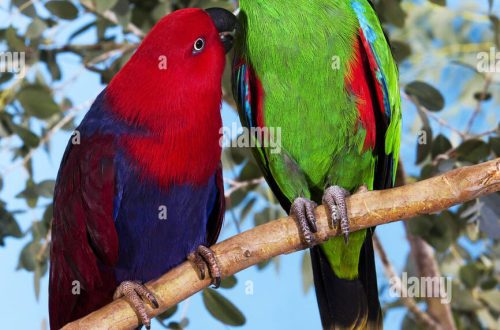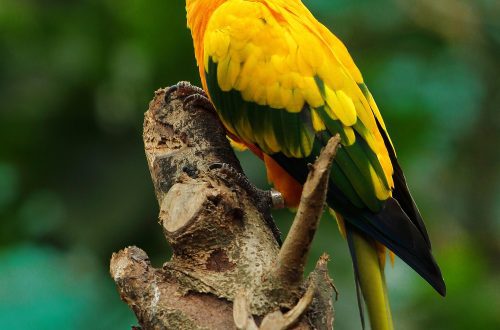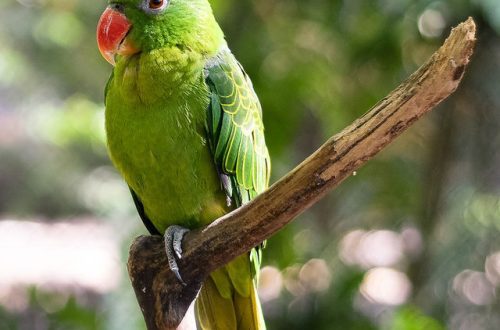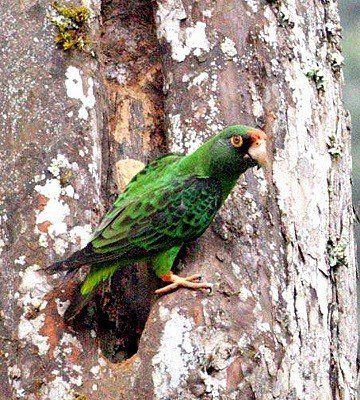
Red-fronted jumping parrot
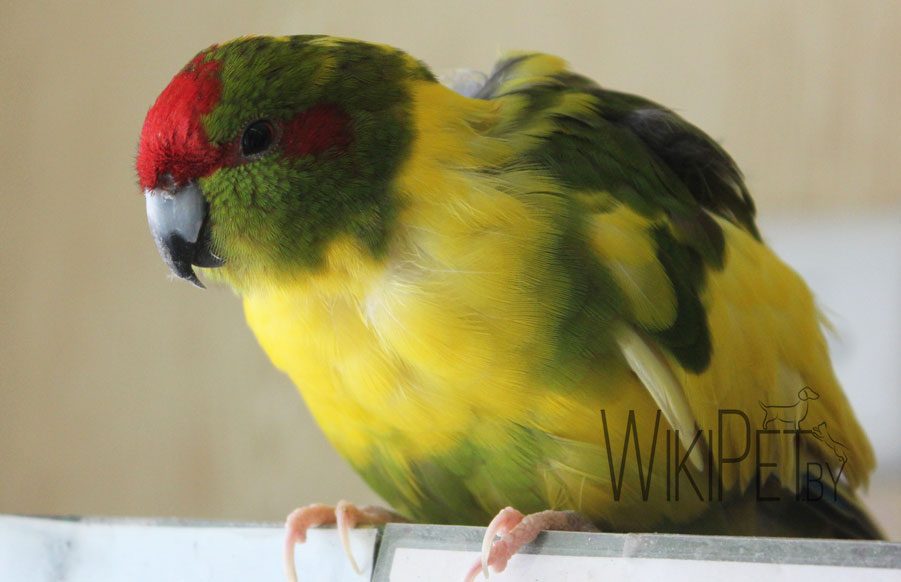
| Red-fronted jumping parrot | Cyanoramphus novaezelandia |
| Order | Parrots |
| family | Parrots |
| Race | jumping parrots |
Contents
APPEARANCE OF RED FLOOR JUMPING PARROTS
These are parakeets with a body length of up to 27 cm and a weight of up to 113 grams. The main color of the plumage is dark green, the undertail and flight feathers in the wings are blue. The forehead, crown and spots near the rump are bright red. There is also a red stripe across the eye from the beak. The beak is large, gray-blue. Eye color is orange in mature males and brown in females. Paws are grey. There is no sexual dimorphism – both sexes are colored the same. Females are usually smaller than males. Chicks look the same as adults, plumage is duller in color. In nature, 6 subspecies are known that differ in color elements. Life expectancy is from 10 years.
HABITATING AREAS OF RED-FROZEN JUMPING PARROTS AND LIFE IN NATURE
It lives in the mountains of New Zealand from north to south, Norfolk Island and New Caledonia. They prefer dense rainforests, forests along the coast, shrubs and edges. The species is under protection and is classified as vulnerable. The wild population numbers up to 53 individuals. Birds live in small flocks in the crowns of trees, but descend to the ground in search of food. They tear the soil in search of roots and tubers. They also feed on fallen fruits and berries. The diet also includes flowers, fruits, seeds, leaves and buds of various plants. In addition to plant foods, they also eat small invertebrates. Feeding habits may vary throughout the year depending on the availability of feed. In winter and spring, parrots mainly feed on flowers. And in summer and autumn more seeds and fruits.
REPRODUCTION
In nature, they form monogamous couples. Depending on the success of nesting, birds may stick together after breeding. In the 2 months before oviposition, the couple spends a lot of time together. The nesting season begins in mid-October. In early October, the male and female explore potential nest sites. The male stands guard while the female explores the hollow. Then, if the place is suitable, the female signals the male by entering and leaving the hollow several times. The female equips the nest by deepening it to 10-15 cm and making it up to 15 cm wide. Chewed wood shavings are used as bedding. During all this time, the male stays nearby, protecting the territory from other males, getting food for himself and the female. If nesting has been successful, pairs may use the same nest for several years in a row. In addition to hollows in trees, birds can also nest in rock crevices, in cavities between tree roots, and in artificial structures. An interesting fact is that the exit from the nest is most often directed to the north. From November to January, birds lay their eggs. The average clutch size is 5-9 eggs. Only the female incubates for 23-25 days, while the male feeds and guards her. Chicks are not born at the same time, sometimes the difference between them is several days. Chicks are born covered with sparse fluff. For the first few days, the female feeds the chicks with goiter milk. Usually on the 9th day of life, the chicks open their eyes, at which time the male is allowed into the nest. At the age of 5 – 6 weeks, the feathered chicks begin to leave the nest. Parents feed them for a few more weeks.



